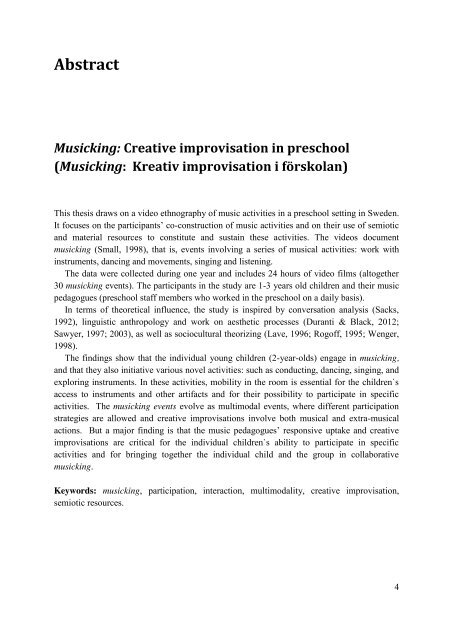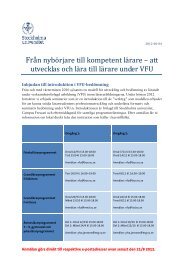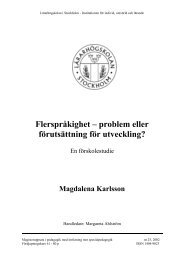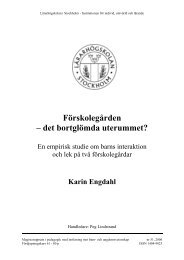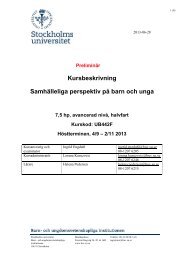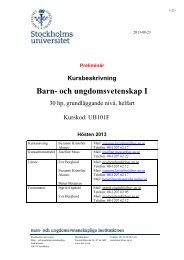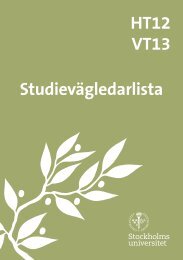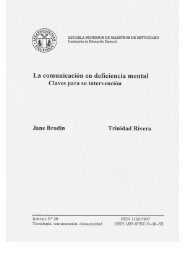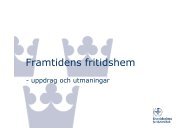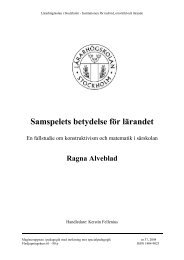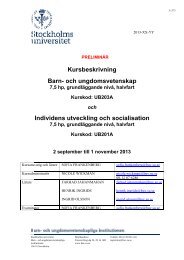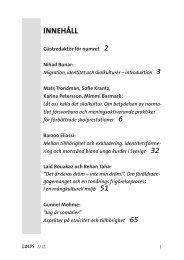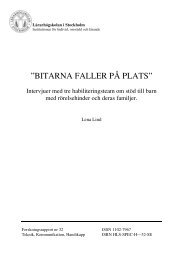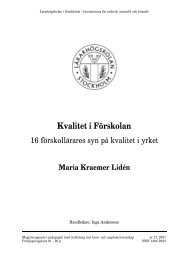Musicking - och ungdomsvetenskapliga institutionen, BUV ...
Musicking - och ungdomsvetenskapliga institutionen, BUV ...
Musicking - och ungdomsvetenskapliga institutionen, BUV ...
Create successful ePaper yourself
Turn your PDF publications into a flip-book with our unique Google optimized e-Paper software.
Abstract<br />
<strong>Musicking</strong>: Creative improvisation in preschool<br />
(<strong>Musicking</strong>: Kreativ improvisation i förskolan)<br />
This thesis draws on a video ethnography of music activities in a preschool setting in Sweden.<br />
It focuses on the participants’ co-construction of music activities and on their use of semiotic<br />
and material resources to constitute and sustain these activities. The videos document<br />
musicking (Small, 1998), that is, events involving a series of musical activities: work with<br />
instruments, dancing and movements, singing and listening.<br />
The data were collected during one year and includes 24 hours of video films (altogether<br />
30 musicking events). The participants in the study are 1-3 years old children and their music<br />
pedagogues (preschool staff members who worked in the preschool on a daily basis).<br />
In terms of theoretical influence, the study is inspired by conversation analysis (Sacks,<br />
1992), linguistic anthropology and work on aesthetic processes (Duranti & Black, 2012;<br />
Sawyer, 1997; 2003), as well as sociocultural theorizing (Lave, 1996; Rogoff, 1995; Wenger,<br />
1998).<br />
The findings show that the individual young children (2-year-olds) engage in musicking,<br />
and that they also initiative various novel activities: such as conducting, dancing, singing, and<br />
exploring instruments. In these activities, mobility in the room is essential for the children`s<br />
access to instruments and other artifacts and for their possibility to participate in specific<br />
activities. The musicking events evolve as multimodal events, where different participation<br />
strategies are allowed and creative improvisations involve both musical and extra-musical<br />
actions. But a major finding is that the music pedagogues’ responsive uptake and creative<br />
improvisations are critical for the individual children`s ability to participate in specific<br />
activities and for bringing together the individual child and the group in collaborative<br />
musicking.<br />
Keywords: musicking, participation, interaction, multimodality, creative improvisation,<br />
semiotic resources.<br />
4


